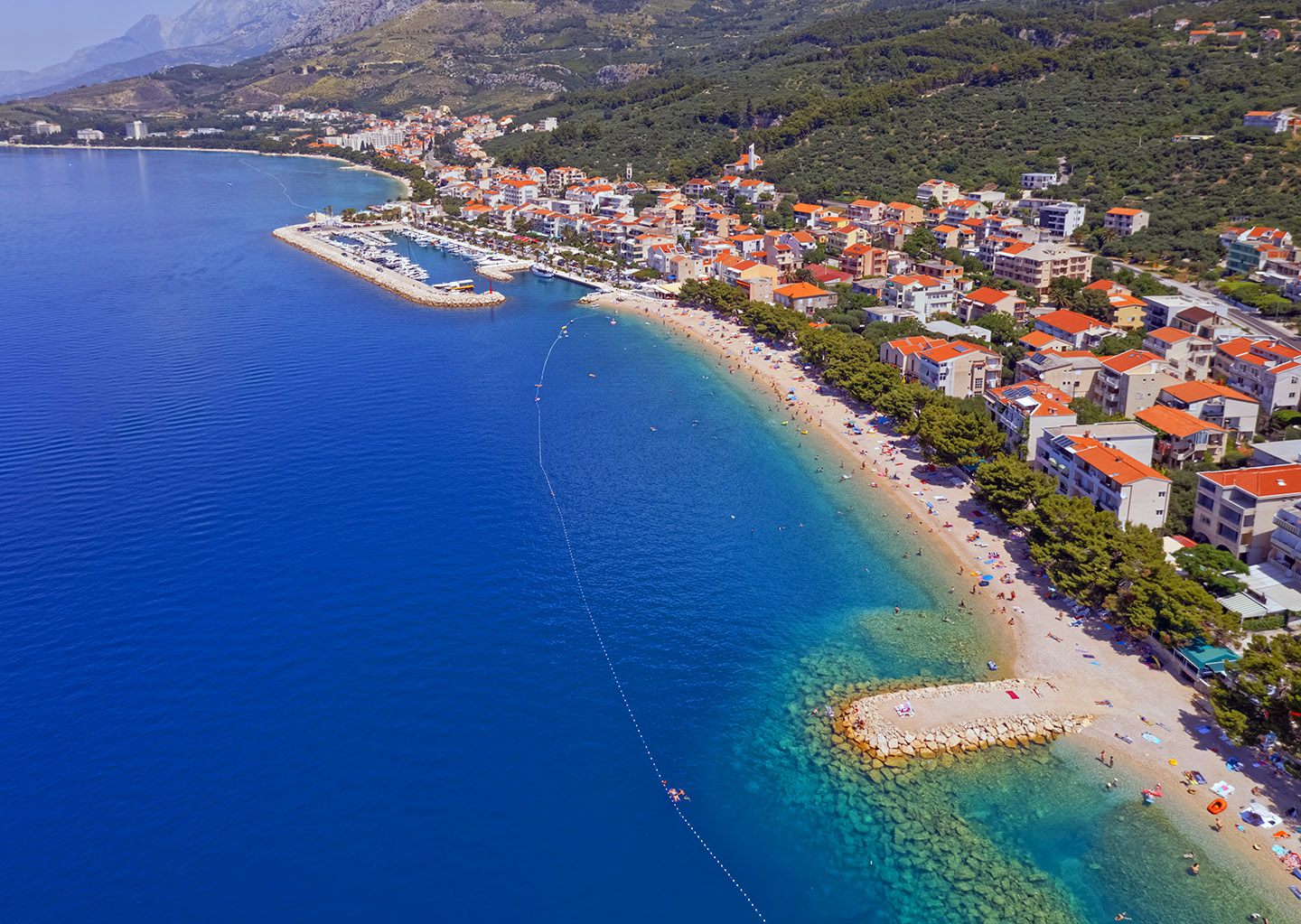there are many exciting places to visit
Makarska Riviera
Makarska Riviera is one of the most beautiful and the most attractive destinations in Croatia, no matter what your interests are. It’s a perfect place for families, group of friends, couples, adventurers and athletes. Makarska Riviera is protected by a high mountain range in the north, enclosed by the blue sea and surrounded by islands in the south and in the west. Located between Vruja and Brela in the north-west and Gradac in the far south, the Makarska riviera is known for its long pebble beaches, beautiful scenery, cultural and historical heritage.

some ideas of active holiday for more experienced
Things To Do
Besides the explosion of colour and life that characterises our summer we invites you to enjoy many other experiences and activities during the season.
- swimming
- diving
- sailing
- parasailing
- rafting
- boat trip
- hiking
- walking
- running
- cycling
- climbing
- paragliding
Brela
The Brela Municipality, with its two towns – Brela and Gornja Brela, contains both the mountains and the sea. The name Brela comes from the old Croatian world “brelo”, meaning a “well” or “spring”.
One of the most beautiful pebbly beaches in the world is located in a protected area, a cape covered by a pine tree forest. In July 2004 the American magazine Forbes listed it amongst the 10 most beautiful beaches in the world. On the western side of the beach is Kamen Brela (the Brela Stone), the symbol of Brela. The rock is covered with pine trees which proudly rise up showing their beauty, as well as strength, power and defiance that they can grow on the rock itself.
One of the most beautiful pebbly beaches in the world is located in a protected area, a cape covered by a pine tree forest. In July 2004 the American magazine Forbes listed it amongst the 10 most beautiful beaches in the world. On the western side of the beach is Kamen Brela (the Brela Stone), the symbol of Brela. The rock is covered with pine trees which proudly rise up showing their beauty, as well as strength, power and defiance that they can grow on the rock itself.


Baška Voda
Protected by the Biokovo mountain in the north and the sea in the south, the Baška Voda Municipality is located between Brela and the town of Makarska. It comprises the coastal resort complexes Baško Polje and Dječje selo and the coastal villages of Promajna, Bratuš and Krvavica, as well as the villages of Topići and Bast found on the steep slopes of the Biokovo mountain at the very end of a spacious field interspersed with pine trees and olives.
Makarska
Makarska is a picturesque town of impressive beauty which lives off tourism and for tourism. It was built around a natural port protected by the peninsula of Saint Peter and cape Osejava, and it is the biggest and only such port between the Cetina and Neretva estuaries. Makarska has always been well known for its sand and pebble beach, which is almost 2 km long. Makarska is located at the foot of the Biokovo mountain range (1762 m), which protects the city from the harsh continental climate. It has a lush Mediterranean vegetation, mild winters and long and warm summers with a refreshing wind maestral.


Tučepi
The Tučepi Municipality includes a town of the same name, situated between the eastern tip of the Osejava cape in the west and the eastern tip of the 4-kilometer long Dračević Bay, and a number of smaller villages on the slopes of Biokovo (Gornje Tučepi). With its gold beaches, the green pines, the beauty of the vineyards and olive-groves, the stone of Biokovo and the azure sea, Tučepi is a breath-taking location. Tučepi has become a leading destination for travellers looking for tranquillity and relaxing in undisturbed natural surroundings.
Podgora
The Podgora Municipality is the penultimate pearl of the Makarska riviera. The administrative territory of the municipality covers the smaller towns of Podgora, Drašnice, Gornje Igrane, Igrane and Živogošće. Its coastal region spreads from the Dračevac Bay at the end of Tučepi to the Vira Bay in the east. Its northern region encompasses a significant portion of Biokovo, from Staza and Donja Gora to the hilltops of Susvid. The name has a Croatian origin and means “the village below the hills or the woods”.

Gradac
In the Middle Ages, the old town of Lapčan (Labinac) existed in the Gradac area, which was also mentioned by the Byzantine emperor Constantin (Labineca). Gradac was mentioned under its current name for the first time in 1649. It was named after the fortress that was located on the hill above the Church of St. Michael, which was built during the Cretan War (1645 -1669). Gradac is the tourist center of the Gradac Riviera. An old settlement has been here since prehistoric times, which can be recognized in stone slabs from the Bronze Age and the Later Iron Age.

Sources: www.makarska-info.hr , www.croatia.hr
